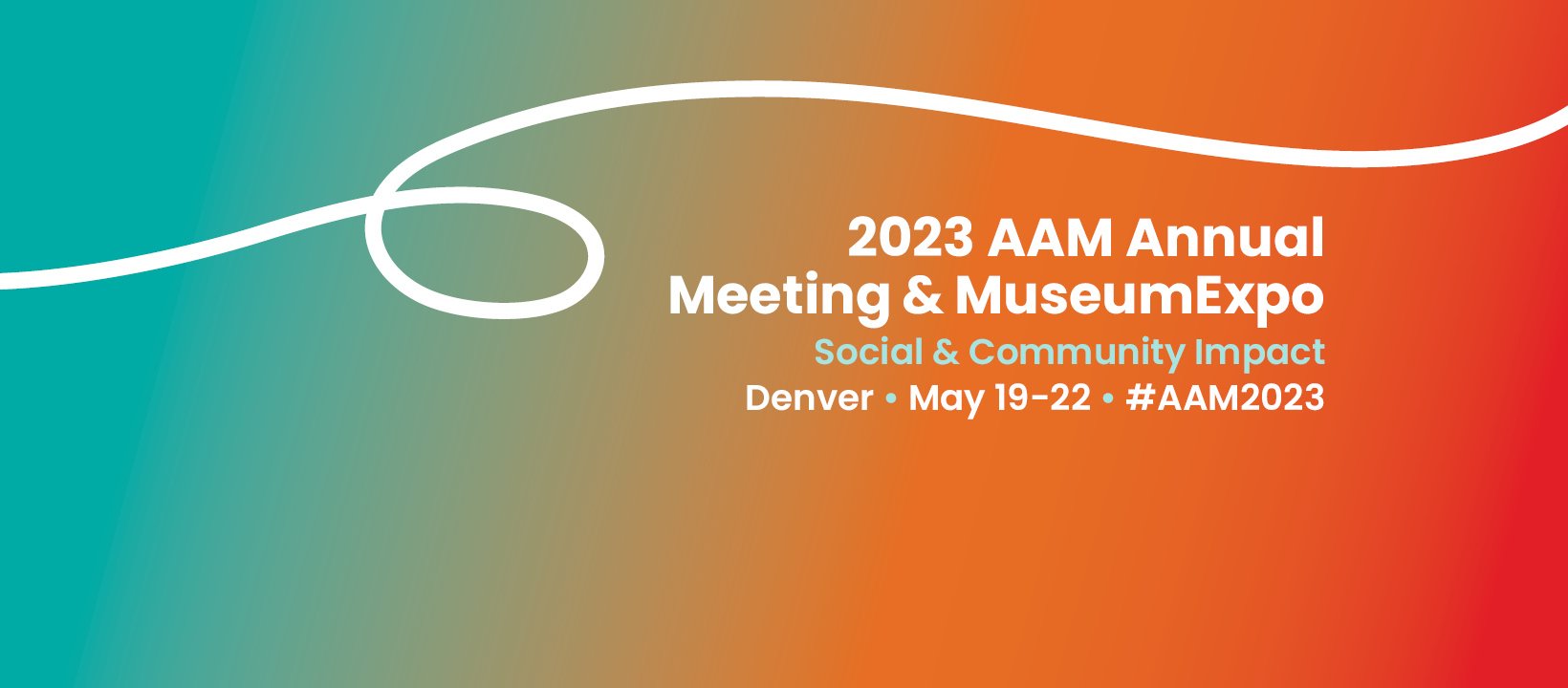by Rachel Broughton and Brett Ashley Crawford, PhD
Both of us attended the 2023 conference in Denver and left inspired. Museums are using technology to engage communities and understand the impact of their work, while many are doing so with an eye to making their technology use more sustainable. Even vendors are understanding the opportunities. Electrosonic, a technology services company that designs, builds, and supports innovative technology solutions, promoted a 2021 survey conducted by Museum Booster that discovered that found that museums use technology interventions to diversify their audience, improve relevance, and to attract more onsite visitors
90 percent reported “to attract more visitors”
85 percent stated “to improve the relevance of content creation and mediation”
83 percent wanted “to diversify the audience of the museum”
77 percent aimed “to attract more on-site visitors”
These result from museums working to be more inclusive, more connected to their community, and be a more personalized experience.
Sustainable Choices with Tech
The key to the future of local communities is undeniably tied to strategies that engage sustainability practices. At the panel “60 Ideas in 60 Minutes” focusing on sustainability, many domains were discussed — from communication to facilities. When focusing on technology choices, a diverse set of ideas were shared and enumerated below. It is important to note that all patron-facing choices must also be evaluated through an equity lens, as it is clear that the United States is far from a digitally equitable landscape. And that not all are affordable to all organizations, but the variety of solutions provides an entry point for all.
Institutional Planning and Strategy
Consider leading the board or staff through a Climate Action process, perhaps tied to the Climate Action Venn Diagram by Ayana Elizabeth Johnson, PhD.
Conduct a core values assessment with the entire staff then post them for all to use and follow
Create a Green Vision Statement and Plan, for example, Sunnylands
Consider Green Divestment / Green Investment statements for endowments
Build Green Goals throughout all areas of operations, including collection plans
Engage in carbon action planning for which you can use Net Zero calculators in partnership with companies like Greenly, to create and measure to meet goals. The presenters included for New York City’s work as an example.
Patron Services
Reduce paper by using apps
Go cashless and receipt-less, this has an unexpected carbon impact on less frequent armored pick-ups for deposits.
Consider electronic signage in exhibits or in gift shops where you can adjust content and prices quickly as needed.
Reduce by evaluating needs and purchasing less.
Create digital art surrogates like 3-D scans to decrease the need for carbon-intensive conservation and protection for some objects.
Consider remote tours to decrease the carbon impact of travel to your location.
Reduce cloud storage to reduce your carbon footprint
Reduce resources that run all day (have sleep modes and broader temperature variances that have been more recently determined acceptable. Another option includes carbon regions in storage (for example, pottery in one zone and paintings in another)
Decouple computing and storage of data
Build microservice containers
Marketing and Communication
Use data to reinforce communication messaging to mail less
Traveling Exhibitions
Use virtual installation coaching in lieu of a full team traveling
Consider lower-carbon shipping options, containers and identify items that can be re-used.
Before starting a traveling project, evaluate the carbon footprint of traveling exhibitions to determine if it aligns with your organization’s sustainability goals and values.
It is important to note that it all takes baby steps. A ‘can’t do that’ today could be a ‘let’s do it’ tomorrow or next year. It is ultimately a process of education and culture change for the institution and can be furthered with internal champions and external community partners already doing the work, whether they are in the museum field or in the local community working on sustainability.
Social Impact and Community Impact
This year’s conference theme was social and community impact—how do we both create systems that positively impact our world and communities, as well as measure that impact? A panel with the Oakland Museum of California (OMCA), a trailblazer in the museum field when it comes to community initiatives and equitable, justice-oriented programming, highlighted this topic well. Apart from its mission, the museum decides on certain social impact goals that align with its mission. Recently, OMCA has been focusing on the social impact measurement of social cohesion, bringing community members from diverse backgrounds into the same conversation and connecting the Oakland community as a whole.
In order to measure its social impact efforts, the museum first emphasized defining the social impact measurement and what it means to the organization specifically. OMCA also developed a set of questions that could be applied to any museum activity, including things like “How does [the program] foster an environment of social cohesion”, and “Whose voice does [the program] prioritize?” If the answers to these questions do not fit the social impact goals, then the program may no longer be aligned with the museum’s goals.
Overall, the major takeaway from the OMCA panel and other AAM discussions around social impact was the emphasis on considering what social issues are museums specifically equipped to address? Often, museums attempt to take on broad social issues in non-specific ways. If this year’s AAM conference shows any trend we will be taking into the future, it is that social impact goals should be organization-specific, well-defined, and well-measured. The first question to ask as a museum administrator is What tools do we have that can serve our community further? and What tools might we want to develop or prioritize?

